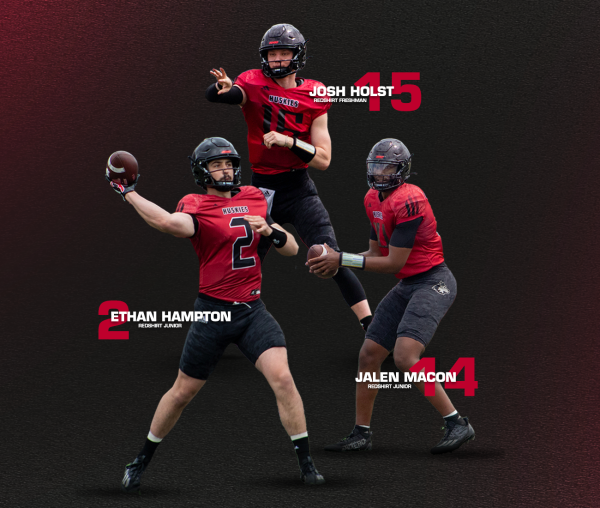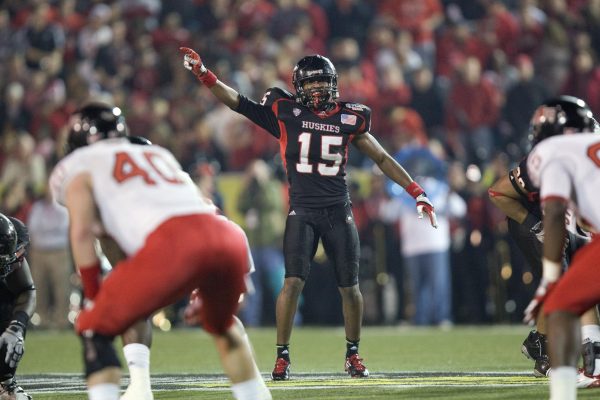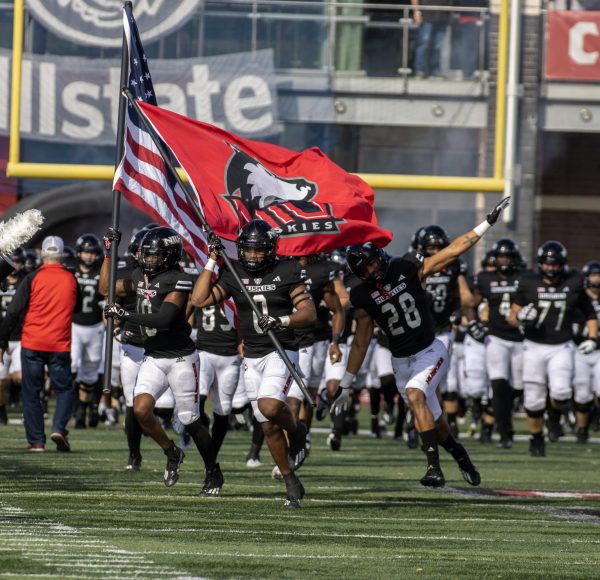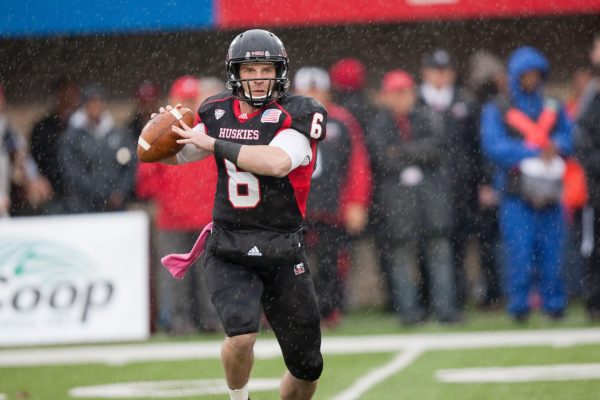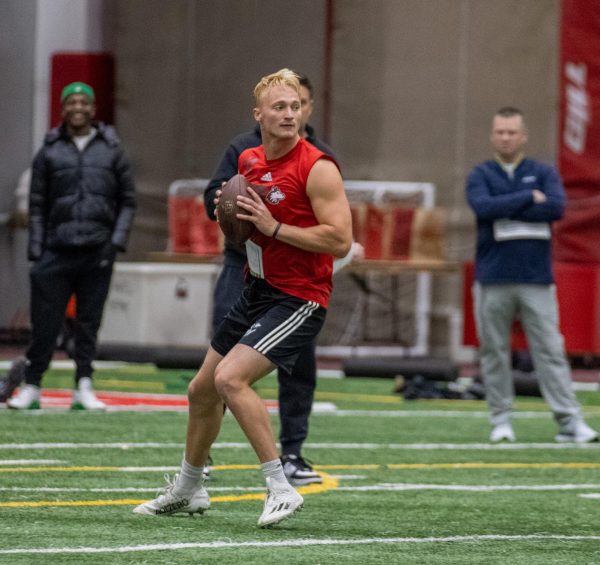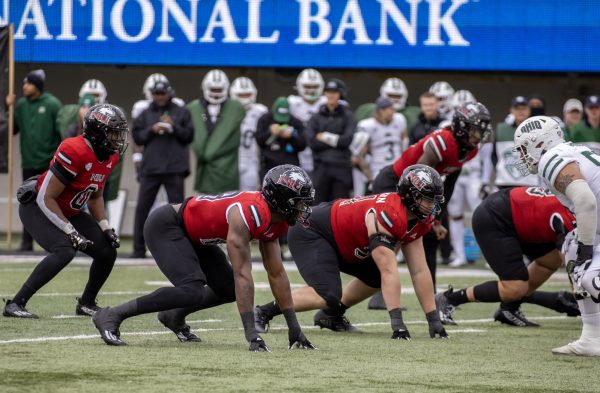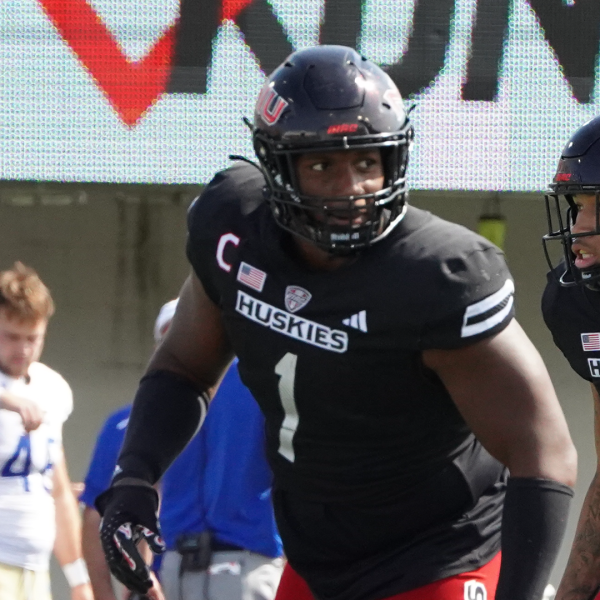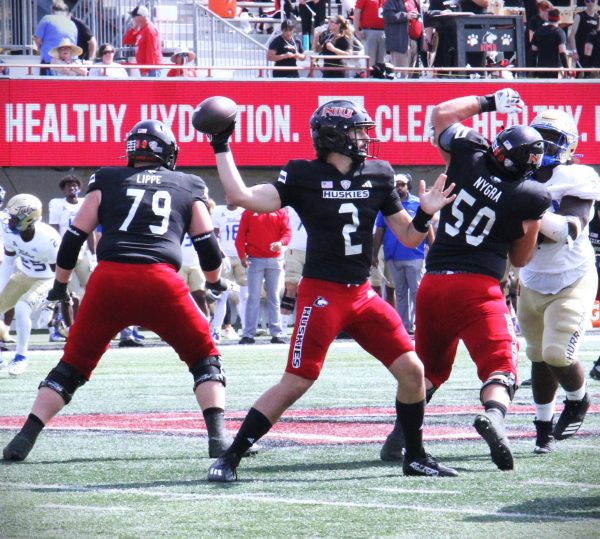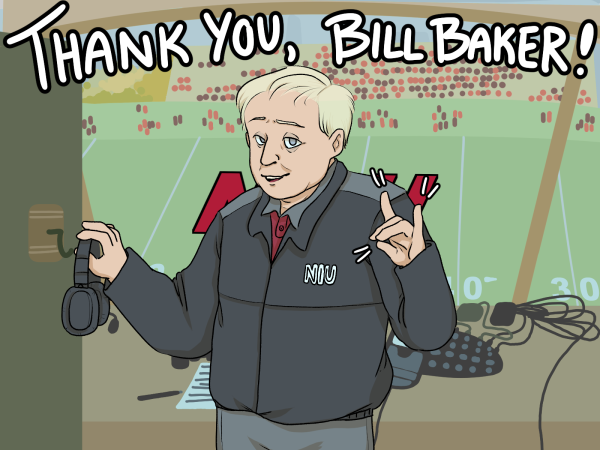This kind of polo doesn’t have a Prince Charles
May 2, 1990
You have not seen a face like this since Linda Blair suffered demonic cramps in The Exorcist. It’s a cross between a silent scream and a massive cringe.
Kevin Budinger, NIU water polo club goalie, looks like a man who has as much chance to stop a waterproof volleyball, fired from 15 feet away, with his good looks as well as his hands. That’s because he is.
Budinger still looks the way he did before the club’s spring season, but his teammates tell of an opposing goalie whose nose held the score down three times in the same match. Rarely are these shots lobbed.
“Sometimes all you can do is hold your face and your arms up,” says Budinger.
Budinger and his mates have done well this spring for the club, which has an 11-4 record over four tournaments. Veteran John Stelnicki says water polo is mainly a California sport (of the eight teams in the 1989 NCAA championships, seven were from Cali) and just two Midwestern teams (Dayton, University of Arkansas-Little Rock) have varsity squads. The rest are clubs.
Four players form the nucleus of the club: Stelnicki, in his 10th year, was Big Ten MVP in 1986 with the University of Illinois; sophomore Jeremy Walsh, a six-year veteran and a “pure shooter,” according to the third core member, Kevin Bolger. Bolger, the current club president and former NIU swim team member, quit swimming because of injured shoulders. “Shoulders can take this (water polo) workout, but not 11,000 yards a day,” he says. Bolger, slight but solid, says he used to have trouble playing with the big boys in high school, but “I finally hit puberty when I came to college.”
Finally, there is Chris Kirsten, former club president, second-leading scorer and printer of the club’s annual tournament program.
These four were on a team that took third at the 1989 Prairie State Games and are in a summer club in Chicago. Fanatics? You bet. Aren’t all club sport members?
Stelnicki says 20 players have shown up at one time or another this spring (new members are always welcome), but lately only 12 have been consistent. Women’s team members—they’re 3-0 by the way—practice with the guys to fill out scrimmages. There were seven members at a recent practice in a game which needs twice as many for a contest. Spring games are usually developmental, fall contests are more competitive because it is the NCAA championship season.
Senior Bill Schuler is in his first semester of play and is not only a starter, he led the team in scoring at a tournament at Iowa State University. Schuler may wear Speedos under his clothes as he speeds from classes to softball games to two jobs to his National Guard duties to the pool. Take a breath.
Schuler described one of his brushes with “underwater trickery” in the heat of a recent match. The judges are poolside so the fouls are on the deep side. “I was grabbed from behind on a fast break,” Schuler says. “I was swimming in place. The foul still wasn’t called.”
Schuler’s lesson in justice is far from the exception. Indeed, fouling is part of water polo strategy. “It’s basically live,” Stelnicki says of his sport.
“It’s easy to grab onto someone and hold them, it’s hard to make it look legal,” Bolger says.
Walsh says like punters in football, water poloists go to extremes to draw a foul call, falling back and “grunting a lot.”
The action centers around the “hole-man,” similar to basketball’s low-post player. Unlike basketball, however, balls passed to the hole-man are passed back. Once the ball is thrown down low (four meters in front of the goal), the other five thrash toward the goal for position. The hole-man then either passes off (usually) or shoots (rarely, because the hole defender is the best defender).
Defenses usually “slough off,” Bolger explains, squeezing down low, similar to giving up the three-pointer in basketball. No one besides the goalie may touch the ball with two hands. A player with the ball cannot be fouled but usually the hole-man is. Once fouled, the hole-man gets three seconds for a free pass.
There is a 35-second shot clock—started when a team gains ball control. Three two-minute time-outs are given per game, which are 28 minutes divided by four quarters. There are two-minute breaks between periods, five minutes at halftime.
“If you’re not strong, you’re not gonna survive in a game,” Bolger says.
Surviving financially for a club takes as much teamwork as the game itself. Bolger says the Student Association allocates money for clubs ($796 for water polo next year) but it is far from enough.
The biggest expense is the NIU tournament, which NIU won last year and took third in this year. Team members sell sponsors tournament program pages averaging $75 per page and charge teams a $75 entry fee. This money covers referee and lifeguard salaries and the cost of program printing.
On the road, players have to dig deep. Kirsten says on average players spend $30 on expenses. The team is hoping to buy a set of shot clocks for next year.



